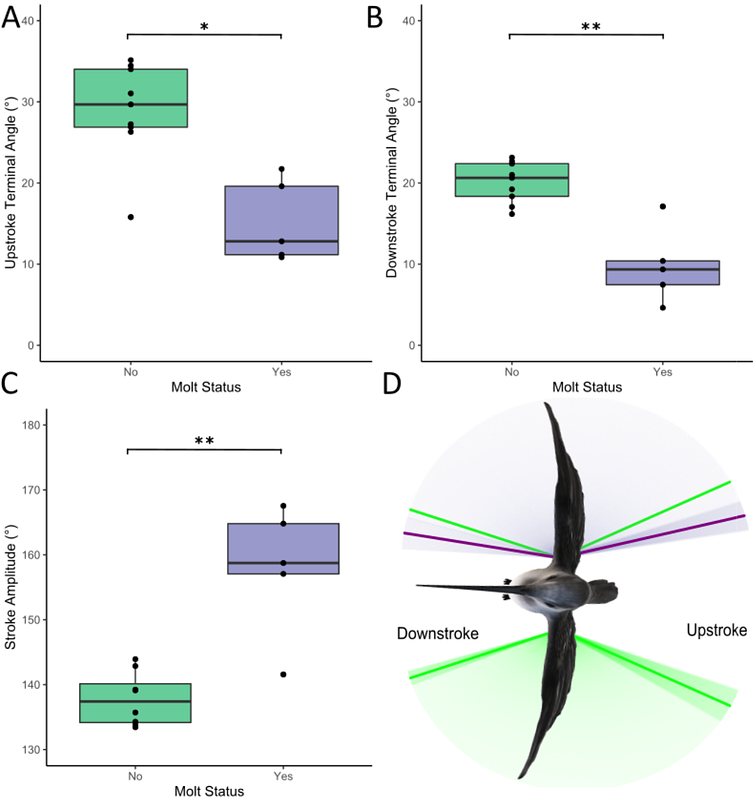Winging it: Unveiling how hummingbirds alter their flying kinematics during molt.

Winging it: Unveiling how hummingbirds alter their flying kinematics during molt.
Diaz-Salazar, A. F.; Garzon-Agudelo, F.; Smiley, A.; Cadena, C. D.; Rico-Guevara, A.
AbstractHummingbirds are well known for their hovering flight, one of the most energetically expensive modes of locomotion among animals. Molt is a costly event in the annual cycle, in which birds replace their feathers, including all their primary feathers which, in hummingbirds, comprise most of the area of the wing. Despite this, the effects of molt on hovering flight are not well known. Here, we examined high-speed videos (14 individuals of three species from the Colombian Andes recorded at 1200 FPS) comparing molting and non-molting hummingbirds wing kinematics and wingtip trajectories. We found that molting hummingbirds extended their wings in sharper angles during both downstroke and upstroke compared to non-molting individuals (10 vs 20, and 15 vs 29, respectively), while other flight parameters remained unchanged. Our findings show that hummingbirds are capable of sustaining hovering flight kinematics even under impressive wing area reductions by adjusting their wing flapping behavior.